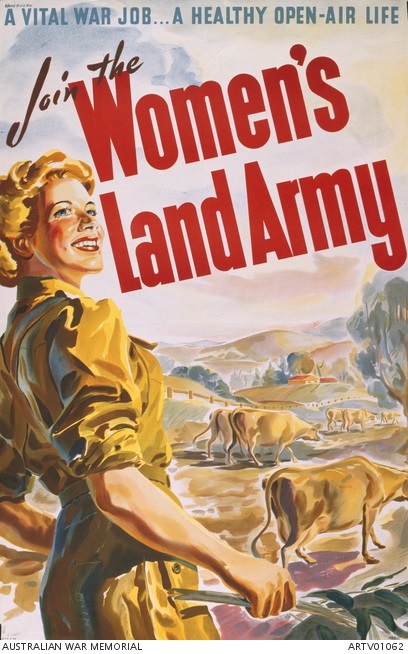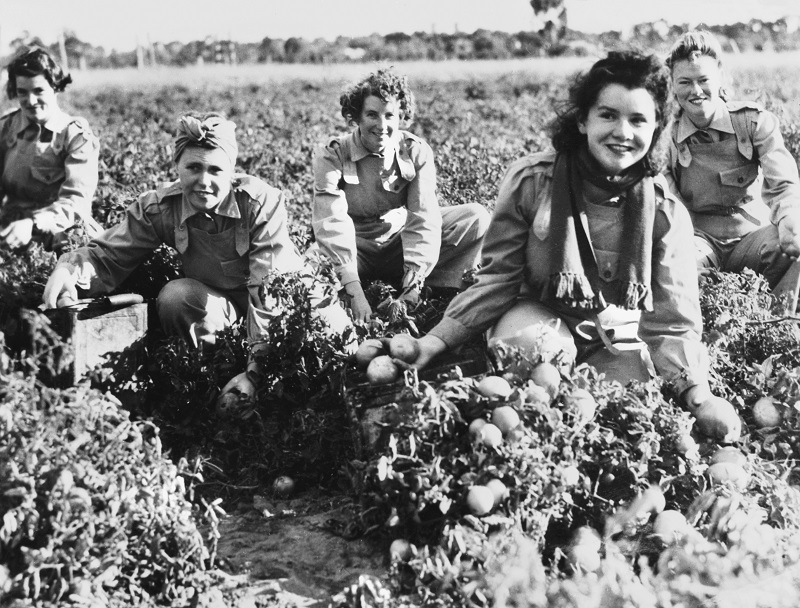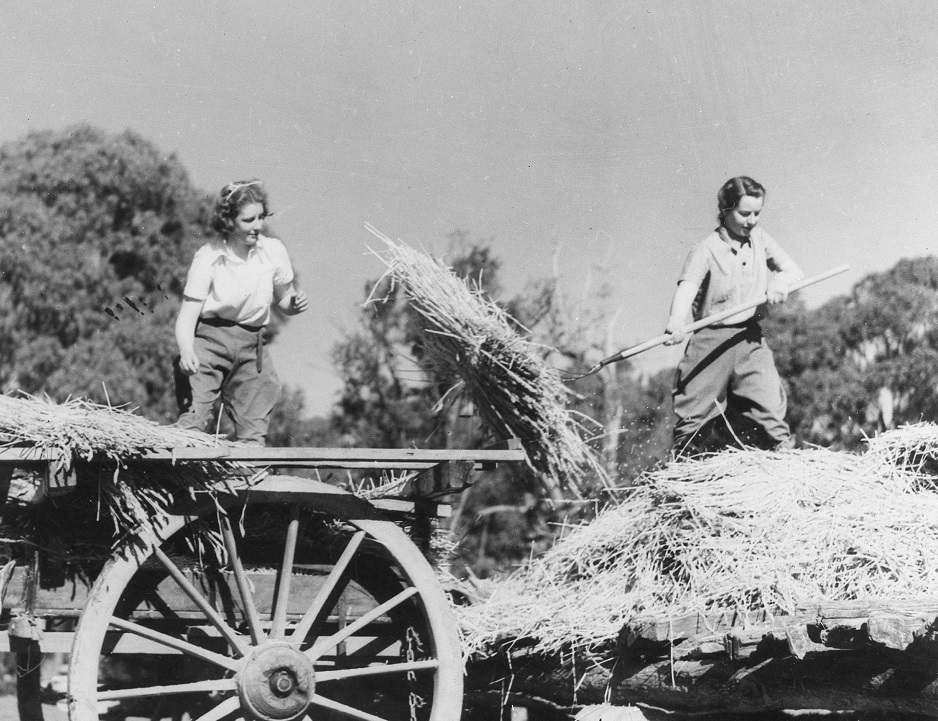80th anniversary of Australian Women’s Land Army
The Australian Women’s Land Army (AWLA) was formed during the Second World War to combat rising labour shortages in the farming sector. From December 1941, when Japan entered the war, the nation’s need to build up its armed forces was placed above the needs of other industries, which resulted in agricultural labour being steadily diverted to the armed services and to vital war industries.

To meet the shortfall in rural labour, state governments and private women’s land organisations were organised, modelled on those established in Great Britain. A national body was formed on 27 July 1942. While policy was devised by the federal government, the organisation of the AWLA remained state-based. An extensive recruiting campaign was undertaken for new members. Most members of the existing land armies were later incorporated into the AWLA as well.
The AWLA functioned in two divisions:
- Full-time members: These women enrolled for continuous service for 12 months (with the option of renewal). They received badges, distinctive dress uniform, working clothes, and equipment.
- Auxiliary members: These women were available for periods of at least four weeks at nominated times of the year. They worked on seasonal rural operations, and received a badge, working clothes, and essential equipment on loan for these times.
Recruits had to be between 18 and 50 years of age and be British subjects or immigrants from Allied nations. Women on the land who were already farmers, employees or relatives of landholders were not eligible to enlist. AWLA women were generally drawn from city areas and were often unskilled in rural work. This new form of labour had to be heavily promoted to rural employers, who were initially resistant to using female labour. But such attitudes generally changed over time, and farmers came to praise and respect the women and the work they did.
Enrolment numbers peaked in December 1943, with 2,382 permanent members, and 1,039 auxiliary members. The average working week for an AWLA member was 48 hours, with pay starting at the AWLA minimum wage of 30 shillings a week. Permanent members were also entitled to sick pay. Women were paid much less than their male counterparts for the same work, which covered diverse roles such as vegetable and fruit growing, pig and poultry raising, and sheep and wool work.
They were also involved in the production of flax, which was one of the most important products during the war. It was used for all sorts of clothing and equipment from coats to parachute harnesses, ropes to tarpaulins and even to cover gliders used to transport troops.
In January 1943, Cabinet endorsed the status of both divisions of the AWLA as an official ‘fourth service’, after the Women's Royal Australian Naval Service, the Australian Women's Army Service and the Women's Auxiliary Australian Air Force. The organisation was to be formally constituted under the National Security Regulations, however, a final draft of these regulations was not completed until 1945, and was not acted upon before the end of the war and the demobilisation of the AWLA. As a result, members of the AWLA were not accorded the same benefits as members of the other women’s services.
The AWLA was disbanded on 31 December 1945. In 1997, many former members of the AWLA became eligible for the Civilian Service Medal, following on from a 1994 Committee of Enquiry recommendation.
Chris Boron’s mother Olga served with the AWLA from 1942 when she turned 16. Olga passed away in 2012, but Chris is keen to see the service of AWLA women better known and fully recognised. He points out that it was not always an easy life.
‘Living in rural huts and tents (no facilities) in all weather conditions, and eating whatever vegetables and fruits that were being harvested, would have been a challenge then and now, for city girls!’ he says.
Based on an article prepared by the Australian War Memorial
Further information:
- How can I trace Australian Women's Land Army records? | National Library of Australia (nla.gov.au)
- Womens land army played an important role during World War II – Anzac Portal (dva.gov.au)
- Women's Land Army video – Anzac Portal (dva.gov.au)


